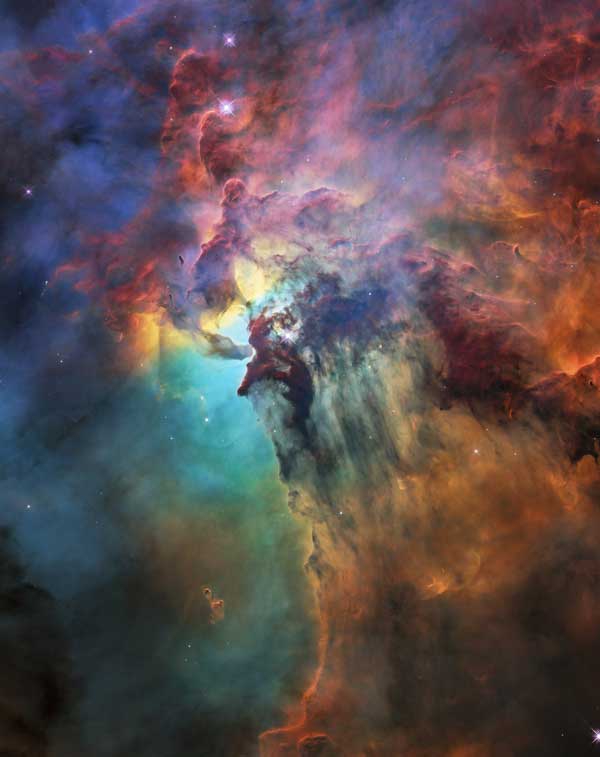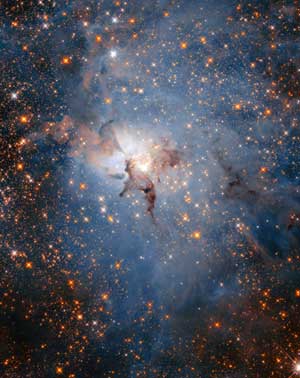To celebrate Hubble's 28th birthday, NASA is releasing a brand-new image of the heart of Lagoon Nebula.
I have a soft spot for Hubble, and not only for its beautiful views of the universe — it shares my birthday. The telescope is a few (ok, several) years younger than I am. But for a space-faring mission, it's looking even younger than its age thanks to several visits from NASA astronauts.
To celebrate Hubble, which has collected 1.5 million observations of more than 43,500 celestial objects to date, NASA is releasing a brand-new image of the Lagoon Nebula, a vast stellar nursery.

NASA / ESA / STScI
The whole nursery is 55 light-years wide and 20 light-years tall, and a whopping 4,000 light-years away. The image shown here zooms in on a 4 light-years-wide section in the heart of this well-studied nebula. (Hubble has taken several images of it in the past, including ones in 1996, 2010, 2011, and 2015.) This image combines information from visible and near-infrared wavelengths, presenting a colorful view of Lagoon Nebula that's different from what we'd see with our own eyes.
At the center of the photo, Herschel 36, a massive young star 32 times the mass of our Sun and 200,000 times brighter, is blasting ultraviolet radiation and stellar winds into the surrounding cloud of gas and dust, carving out a cavity that allows astronomers to peer into the stellar breeding ground. Such massive stars live fast and die young: Herschel 36 is only a million years old and will likely go supernova in another 5 million years.

NASA / ESA / STScI
Dark cocoons of denser dust and gas resist the erosion; these regions contain still-forming stars. Hubble uses near-infrared radiation to peer into these regions, though the densest regions remain impermeable.
Read more about the image in Hubble's press release.
Five servicing missions have helped expand Hubble's far-seeing powers over the years. In fact, the mission was designed to be serviceable, so all of its parts are accessible for replacement or repair using wrenches and power tools. The first, vital servicing mission fixed the telescope's myopia. The ones that followed replaced essential parts, replaced and repaired instruments, and gradually built up the telescope's field of view, resolution, and wavelength range.
The last servicing mission was in 2009. While NASA doesn't plan on further servicing the telescope, Hubble remains in good condition nine years later, and engineers and astronomers alike are optimistic about its future.
Take an imagined three-dimensional flight across the core of the Lagoon Nebula:
 1
1









Comments
Joe Adlhoch
April 27, 2018 at 4:46 pm
I too have a soft spot for Hubble. Several of us at my bachelor party in late April 1990 watched it cross the sky right behind the space shuttle at about 4AM in Phoenix, AZ.
You must be logged in to post a comment.
You must be logged in to post a comment.